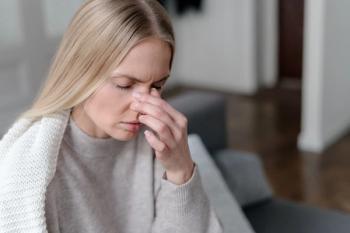
Affirmative Action Repeal Decreases Minority Acceptance and Matriculation in Medical Schools
Key Takeaways
- The Supreme Court's 2023 ruling on affirmative action led to decreased URIM medical school applications and acceptance rates, particularly affecting Black students.
- Despite increased Asian and White acceptance rates, URIM matriculants decreased by 503 from 2019 to 2023, highlighting disparities in medical school admissions.
Medical school application and matriculation rates decreased for underrepresented racial and ethnic minorities in medicine after the 2023 Supreme Court affirmative action repeal.
Medical school application rates from underrepresented races and minorities in medicine (URIM) significantly decreased after the Supreme Court decided to overturn
Affirmative action began under President John F. Kennedy as an executive order (EO) on
Decrease in Minority Enrollment
Overall, researchers observed an absolute increase in acceptance rates for White and Asian students (40.4% to 47.7% and 38.3% to 45.2%, respectively). Black students, however, observed an absolute decrease in acceptance from 36.1% to 33.1%. Hispanic, Native American, Alaskan Native, Native Hawaiian, and Pacific Islander applicants saw no significant change in acceptance rates.
The total number of matriculants increased from 18,304 to 19,018 from 2019 to 2023. The number of White matriculants only increased by 26 matriculants, while the number of Asian matriculants increased by 1186. In line with the previous findings of acceptance, URIM matriculants saw a total decrease of 503 matriculants from 2019 to 2023. More specifically, Black matriculants decreased by 321, Hispanic matriculants decreased by 165, and Native American, Alaskan Native, Native Hawaiian, and Pacific Islander matriculants decreased by 35.
When comparing URIM representation in MD programs in states with preexisting affirmative action bans vs those without, mean (SD) URIM representation was relatively similar (25.4% [11.0%] vs 27.0% [18.8%]; P = .56). By contrast, after the 2023 Supreme Court ruling, although URIM representation remained the same at institutions in states with a preexisting affirmative action ban, states without saw a substantial decrease (27.0% to 20.9%).
“An important finding from our study was an emergent disparity in acceptance rates of URIM applicants relative to Asian and White applicants in 2024 that was not present prior to the ban,” the study authors wrote. “Prior research has estimated that based on trends in medical school admissions as of 2018, it could take a century to achieve racial parity in representation among matriculants and the US population.”
The study authors also noted that while the ruling may have been made on the principle of meritocracy, that same principle in the broad context of medical education continues to sustain persistent systemic racial and ethnic discrimination, which includes unequal access to educational opportunities.
This study is limited by using only 1 year of post-2023 SCOTUS ruling data, which may not capture the full impact of changes in admissions policies or pathway programs over time. Observational design means other factors—such as applicant characteristics, year-to-year fluctuations in applicant numbers, and external events like COVID-19 or social justice movements—could have influenced URIM acceptance and matriculation rates. The analysis focused only on race and ethnicity, so potential effects on other groups, such as individuals with disabilities, were not assessed. Additionally, while increases in Asian representation were observed, structural barriers and heterogeneity within Asian subgroups suggest that these trends should be interpreted with caution.
Minority Representation in Medicine
In medicine, minority populations are often disproportionately underrepresented among physicians.
Historically Black colleges and universities (HBCUs), however, consistently contribute to the minority representation in the medical school body, making up 14.2% and 14.9% of Black women and men, respectively, in 2019 in the national medical student body.5
On the other hand, from a
However, despite the systemic inequities many URIM physicians face, the National Academy of Medicine is among multiple health and equity groups that believe increasing racial diversity among physicians would improve patient care for minority populations.
“It is important to note the potential implications of a less inclusive physician workforce. The US faces a public health crisis and a projected nationwide shortage of more than 130,000 physicians by 2030 that will disproportionately impact medically underserved areas,” the study authors in JAMA Network Open explained. “URIM physicians are more likely to provide medical care to uninsured and Medicaid patients and individuals living in medically underserved communities.”
A diverse learning environment has the potential to benefit all learners. The study references prior research that showed White medical students were better equipped to care for patients from different racial and ethnic backgrounds, having been immersed in a racially diverse learning environment when compared with their White counterparts who were not.1
It is important to acknowledge the social and scientific contributions of racial and ethnic diversity in medicine. Highlighting these inequities also forces institutions and policymakers to recognize the critical role racial and ethnic diversity plays in the professional development of physicians and how their education shapes patient care and outcomes.
References
1. Nguyen M, Hajduk A, Fancher TL, et al. Medical school admissions after the Supreme Court’s 2023 affirmative action ruling. JAMA Netw Open. 2025;8(8):e2527008. doi:10.1001/jamanetworkopen.2025.27008
2. Exec Order No. 10925, Establishing the President’s Committee on Equal Employment Opportunity. National Archives. March 6, 1961. Accessed August 25, 2025.
3. A brief history of affirmative action. Office of Equal Opportunity and Diversity; UCI. Accessed August 26, 2025.
4. Institute of Medicine (US) Division of Health Sciences Policy. Medical education and societal needs: a planning report for the health professions. Washington (DC): National Academies Press (US); 1983. Chapter 10, FINANCING MEDICAL EDUCATION.
5. Morris DB, Gruppuso PA, McGee HA, et al. Diversity of the national medical student body—four decades of inequities. N Engl J Med. 2021;384:1661-1668. doi:10.1056/NEJMsr2028487
6. Marrast LM, Zallman L, Woolhandler S, Bor DH, McCormick D. Minority physicians’ role in the care of underserved patients: diversifying the physician workforce may be key in addressing health disparities. JAMA Intern Med. 2014;174(2):289-291. doi:10.1001/jamainternmed.2013.12756
7. Adebayo NA, Madorsky TZ, Alhalel J, Post SL, O'Brian CA, Simon MA. Underrepresented minority (URM) physician exploitation exacerbated by the COVID-19 pandemic: implications for URM physician-faculty burnout and worsening health disparities. Harv Public Health Rev (Camb). 2021 Jun 1;30:
Newsletter
Stay ahead of policy, cost, and value—subscribe to AJMC for expert insights at the intersection of clinical care and health economics.








